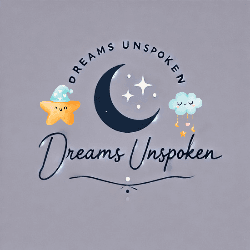What Stage of Sleep Do You Dream? Unlocking the Secrets of the Dream World
Have you ever caught yourself asking, what stage of sleep do you dream—truly dream? Not just flickers of thoughts, but those vivid, strange, emotionally charged worlds your mind constructs at night? It’s a question that lingers for many of us who wake up feeling like we’ve been somewhere else entirely.
Most people assume dreams happen during deep sleep, the kind that leaves you feeling restored. But that’s only part of the story. Dreaming is most intense during REM sleep—a lighter, more active stage of your sleep cycle where the brain lights up in patterns eerily similar to waking hours. But dreams can spill into non-REM stages, too, especially when the subconscious is working overtime.
Table of Contents
Understanding what part of sleep you dream in isn’t just about curiosity. It’s about your health, your memory, and your emotional state. REM sleep helps your brain process trauma, store memories, and regulate your mood. Deep sleep repairs your body, but REM? It helps heal your mind.
In this article, we’ll explore each stage of sleep, especially the one where dreams take center stage. We’ll also talk about how much deep sleep you really need, what deep dreaming means, and how understanding your own sleep architecture can change the way you rest—and the way you wake up.
Let’s unravel this, one stage at a time.

Understanding what stage of sleep do you dream is only part of the story—if you’re constantly waking up drained, chronic sleep deprivation might be quietly sabotaging your rest.
Once you understand what stage of sleep do you dream, you might find yourself curious about controlling those dreams—but is lucid dreaming a sin, or simply a deeper way to explore your subconscious?
Deep Sleep vs. REM Sleep: Understanding the Sleep Cycle
Your sleep isn’t just one long stretch of unconsciousness—it’s a beautifully orchestrated rhythm that moves through several distinct stages, each with its own purpose and magic. This cycle, typically repeating every 90 to 120 minutes, is made up of two broad types: NREM (non-rapid eye movement) sleep and REM (rapid eye movement) sleep.
It begins in Stage 1, the lightest sleep, a gentle drift from wakefulness. Here, your muscles start to relax, your breathing slows, and your thoughts begin to blur. It’s that floating-in-and-out sensation—easy to wake from, yet essential for easing into deeper rest.
Stage 2 is where your body continues its descent. Heart rate drops, body temperature lowers, and brain activity begins to slow with brief bursts called sleep spindles. This stage accounts for about half of your sleep each night and acts like a bridge between light and deep sleep, keeping you tucked into the rhythm of the cycle.
Then comes Stage 3, also known as deep sleep, or slow-wave sleep. This is the most physically restorative part of your slumber. During deep sleep, your body gets to work—repairing tissues, strengthening your immune system, and releasing growth hormones. It’s here that your body truly rests. However, this is not the stage where you dream. While the brain is still active, it’s not generating the vivid dreamscapes you’re used to.
Dreams come alive in the fourth and final stage: REM sleep. This is the answer to the question what stage of sleep do you dream. In REM, your brain is highly active—even more so than during some waking states. Your eyes dart behind closed lids, your muscles go into a temporary paralysis, and your subconscious takes center stage. Emotions, memories, and imagination all swirl together here. It’s the realm of deep dreaming, symbolic processing, and mental healing.
As the night progresses, the body spends less time in deep sleep and more in REM—meaning your most vivid, story-like dreams often arrive closer to morning. Understanding how much deep sleep you need, and recognizing what part of sleep you dream in, can completely shift how you approach rest.
So next time you wonder why you feel emotionally shaken after a dream, or physically drained after a restless night, remember: your sleep stages were speaking to you—and each one had something different to say.
What Stage of Sleep Do You Dream – The Explanation
So, what stage of sleep do you dream? It’s REM sleep—the one moment in your cycle when your brain lights up like a city at midnight, even though your body remains still. It’s the paradox of dreaming: your body is paralyzed, but your mind is wide awake, wandering landscapes built from emotion, memory, and meaning.
Dreams born in REM sleep aren’t random. They’re the mirror your subconscious holds up when you’re too tired—or too afraid—to face what’s inside. That sudden fall, the forgotten face, the chase you can never outrun—they all say something. These dreams carry the weight of your unspoken fears, quiet grief, buried desire.
And here’s what most people don’t realize: dreaming is a form of healing. REM sleep isn’t just where your dreams live—it’s where your mind sorts the chaos, files away stress, and softens emotional edges. Without enough of it, your nervous system stays on edge, your anxiety lingers, and your peace slips further away.
So the next time you wake from a dream that feels too intense to ignore, don’t. It’s your mind trying to find balance. Because the answer to what stage of sleep do you dream isn’t just REM—it’s the stage where your soul whispers.

If you’re serious about reaching the stage of sleep where dreams unfold, you need to set the scene—starting with complete darkness. This REM Sleep Mask by Earth Therapeutics blocks out every flicker of light, helping your brain slip more easily into the REM stage where vivid dreaming happens. It’s soft, lightweight, and surprisingly effective—plus, it won’t leave dents on your face or cost a fortune.
Want to find out what stage of sleep you dream in more often? Start by protecting your REM cycles—and this little mask might just be the simplest tool in your nighttime arsenal.
What Stage of Sleep Do You Dream? Unlocking the Secrets of REM Sleep
Dreaming mostly happens during REM sleep, the stage when your brain becomes wildly active while your body remains still. But what stage of sleep do you dream in isn’t just a technical question—it’s a doorway into the subconscious. During REM, your brain stitches together pieces of your day: conversations you replay, feelings you’ve buried, memories you’ve half-forgotten. That’s what stage of sleep do you dream in—the place where truth and emotion collide in vivid, symbolic stories.
These dreams feel personal for a reason. They echo your quiet fears, reflect unresolved pain, and sometimes offer hope you haven’t yet dared to voice. What stage of sleep do you dream in shapes your emotional well-being, because REM is not just about dreaming—it’s your mind’s form of therapy.
Dreams during REM help regulate your mood, process anxiety, and reset your nervous system. Without them, emotions get stuck, and the tension builds. And while deep sleep restores your muscles and organs, the stage of sleep where you dream—REM—is where your mind begins to heal.
So if you’re wondering what stage of sleep do you dream in and why it matters, remember this: dreams aren’t just nightly noise. They’re the language of your soul, spoken in the quiet of the night.
Why Do Some People Remember Their Dreams While Others Forget?
Some people wake up with their dreams still lingering like whispers—every detail crisp, every emotion vivid. Others open their eyes to a blank slate, unable to recall even a trace. The difference lies in what stage of sleep do you dream and when you wake from it.
Dream recall is heavily tied to how your brain transitions between sleep cycles. If you wake during or right after REM—the stage where most dreaming happens—you’re more likely to remember what you saw and felt. That’s what stage of sleep do you dream in, when your subconscious is closest to the surface and memory can still hold on. But if you wake up during deep sleep or a non-dreaming phase, those vivid stories often vanish before you even reach the light switch.
Your brain chemistry matters too. Higher levels of norepinephrine—linked to memory—can boost how well you remember dreams. Stress, erratic sleep schedules, and even diet can blur the lines between dream and forgetfulness.
So, if you’re asking yourself why your dreams keep slipping away, it’s time to pay attention to what stage of sleep do you dream in. Because that’s where your mind does its most mysterious work—and it’s also where your most personal truths often hide.

Still wondering what stage of sleep you dream in? It’s time to stop guessing and start tracking. This Withings Sleep Tracking Mat slides right under your mattress and does all the heavy lifting—no wearable needed. It monitors your sleep cycles, heart rate, breathing, and even snoring. I’ve found it to be shockingly accurate, and the best part? It breaks down your REM stages so you can actually see when your brain is dreaming.
If you’re serious about improving your sleep and understanding what part of sleep you dream in, this is the most approachable, non-intrusive tool I’ve tried—and the reviews speak for themselves.
How to Sleep Better and Dream Like a Pro
Want to level up your dreams and actually wake up feeling human again? It all starts with what stage of sleep do you dream—and how you prepare your mind to get there. The quality of your REM sleep can make or break your next day. So treat your bedroom like sacred ground: cool, dark, quiet, and for the love of rest, no glowing phone screens at midnight.
If you’re craving those deep, healing sleep stages, especially REM—the stage where most dreaming happens—then it’s time to rethink your wind-down routine. Skip the late-night espresso. Maybe even pass on that second glass of wine (yes, even if the day chewed you up and spit you out). Instead, do something gentle. Read. Stretch. Journal. Anything that keeps your brain from obsessively rehearsing tomorrow’s chaos.
Here’s your not-so-secret weapon: a dream journal. Even if all you recall is “a penguin stole my sandwich,” write it down. It’s your way of telling your brain, “Hey, I’m listening.” The more attention you give your dreams, the more they’ll give back. And if you wake up in the middle of one? Don’t doom-scroll. Stay still. Let the fragments float in, and catch them before they vanish.
Because once you understand what stage of sleep do you dream—and respect the space that stage needs—you’ll open the door to deeper rest, stranger dreams, and maybe even answers you didn’t know you were searching for.
Still wondering what stage of sleep do you dream and how to actually get there? Sometimes, your brain needs a little guidance to quiet down and sink into REM. That’s where this Sleep Hypnosis Bundle steps in. It’s not just background noise—it’s a gentle, guided path toward deeper rest and dream-rich sleep.
With tracks designed to ease anxiety and relax your mind, this bundle can help you drift off faster and stay in the dream-heavy REM stage longer. Plug in, press play, and let your subconscious take over.
How to Take Control of Your Nighttime Adventures
Dreams can take you places your waking mind would never dare—but what if you could steer them? That’s the magic of lucid dreaming. It’s that moment when you realize you’re dreaming, and instead of watching from the sidelines, you step into the scene with intention. Fly over cityscapes. Revisit someone you miss. Confront a fear in a world with no consequences.
It might sound unreal, but it starts with one simple step: understanding what stage of sleep do you dream in. Since lucid dreams most often occur during REM sleep—the most active and emotionally charged stage—learning to tune into this cycle can unlock the door to conscious dreaming.
And no, it’s not some mystical gift. Lucid dreaming is a skill. With the right techniques and consistent practice, anyone can learn to wake up inside their own dream. Want to dig deeper into the strange and meaningful world of sleep? Start with this guide on why recurring dreams happen. Once you understand what your dreams are trying to say, you’ll be better prepared to take the wheel.
Your nights might just become the most extraordinary part of your day.
When exploring what stage of sleep do you dream, you may uncover visions that feel older than your lifetime—past life dreams might be more than imagination; they might be echoes from before.
Make sure to like and follow us on Facebook







